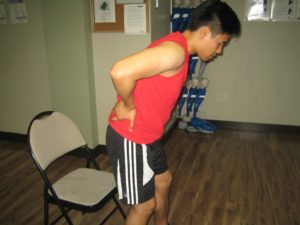A bulging disc or herniation happens when the cartilage found between the bones in the back or vertebrae moves out of its place. They function as shock absorbers that lessen pressure placed on the backbones when performing physical activities. Sometimes, these discs can bulge and result to the compression of a spinal nerve and cause severe pain, numbness, tingling sensations or weakness of the arms or legs.
Symptoms of a bulging disc
- Tingling sensations or pain that spreads down the fingers, toes and wrist.
- Localized pain can be felt in the spinal area, lower back, middle back, limbs, neck and the head.
- Pain and numbness felt in the buttock and down the legs or sciatic pain

Localized pain can be felt in the spinal area, lower back, middle back, limbs, neck and the head. - Numbness and weakness of the affected area
- Difficulty with movement due to muscle aches, pain and weakness.
Causes
- Loss of mobility and flexibility of the spine
- Spinal or neck injuries
- Being overweight
- Wear and tear of the discs which is part of the aging process
- Severe inflammation caused by poor diet, sedentary lifestyle, drug use or smoking and excessive stress.
- Osteoarthritis or a degenerative disease of the joint
- Being tall is a risk factor
- Improper techniques during weight lifting
- Occupations that trigger severe back and neck strain
- Poor posture
Treatment
- Adequate rest as soon as symptoms arise for at least 2 days. Avoid performing activities that causes pain and worsen the symptoms
- Support the spine by strengthening the muscles of the back with physical activities such as exercises for the back and stretches with the help of the physical therapist.
- Apply ice on the back for at least 20 minutes to lessen pain in the back during the first 48 hours. Avoid applying an ice pack directly on the skin to prevent further damage and worsen the condition.
- Apply a heat pack on the back 48 hours after the injury to lessen stiffness. Cold and heat therapy can be alternately applied on the affected area as often as possible.
- Take the prescribed over-the-counter non-steroidal anti-inflammatory drugs (NSAIDs) to lessen the pain and inflammation.
- Get plenty of sleep for at least 7-9 hours of sleep at night. Take a rest between workouts especially if performing intense and repetitive movements.
- Maintain good posture, perform stretching frequently and take a break at least 20-30 minutes to prevent prolonged sitting for hours while working at a desk. Another alternative while working in a desk is to use a supportive ergonomic chair that provides support and correct back posture.
- Stick with an anti-inflammatory diet that includes green leafy vegetables, healthy fats such as extra virgin oil and coconut oil.
- Cessation of smoking.
More Information
The details posted on this page on a bulging disc is for learning purposes only. To learn to recognize and manage back injuries and conditions, enroll in a first aid course with one of our training providers.
FACT CHECK
https://physioworks.com.au/injuries-conditions-1/bulging_disc
